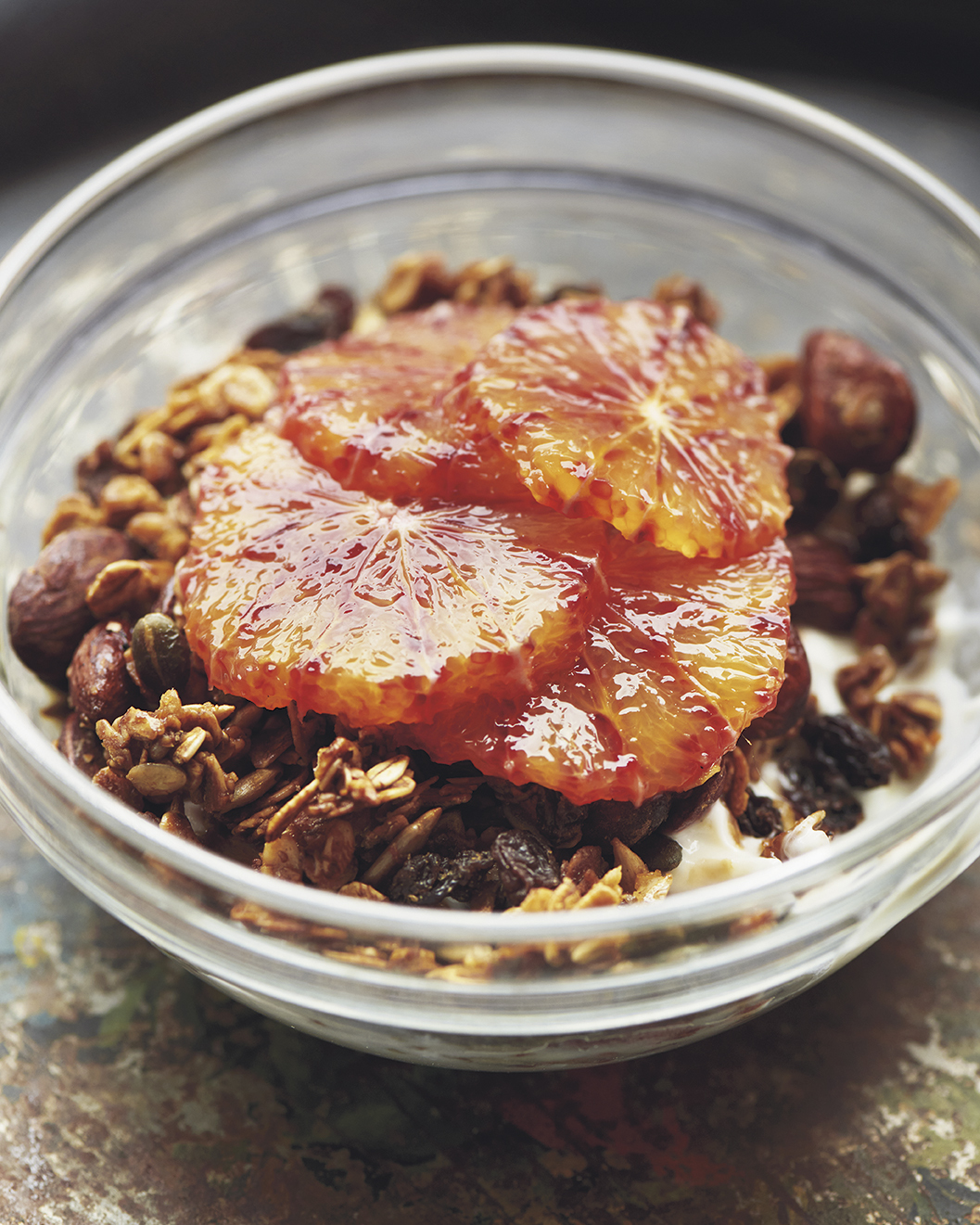Get Premium access to all the latest content online
Subscribe and view full print editions online... Subscribe
Makes around 2kg Desserts and puddings
Preheat the oven to 160C/ 140C F/Gas 3. Line two large baking trays with baking paper.
Place the oil, honey, brown sugar, vanilla, cinnamon and salt in a medium-sized pan. Slowly, gently stirring, bring to the boil over a medium-low heat. Check the sugar has dissolved and you have a smooth liquid.
Put the oats, almonds, pumpkin and sunflower seeds in a big heatproof bowl and carefully pour in the liquid. Stir well, so everything is evenly mixed and coated.
Spread thinly over the baking trays. The thinner the layer the quicker and more evenly it will cook. Bake for 25-40 minutes until golden and caramelised. You may need to turn it if one side is browning more than the other.
Remove from the oven and allow to cool slightly for 5-10 minutes. Break up the granola with your hands – the warmer the granola, the easier it is. Add the raisins and mix thoroughly.
Serve with yoghurt and seasonal poached fruit (pictured with blood orange, but rhubarb, apples, pears, berries and cherries and quince will see you through the year) or compote, or marmalade (see recipe below).
MAKES 1 LITRE
(Start 1 day before serving)
Wash the oranges, removing the buttons at the top, halve and juice, keeping the juice in one container and any pulp in another. Spoon the remaining pith out of the juiced oranges (Seville oranges are much pithier than blood oranges) and add to the pulp container.
Lay a muslin cloth in a bowl and tip in the pith/pulp mixture. Tie the cloth up tightly. Using a sharp knife, thinly slice the orange peel halves into thin pieces. Place in a bowl and cover with the orange juice and 2.5 litres water. Add the pith and pulp tied up in their cloth and leave overnight or for up to 24 hours in the fridge or cool place.
The next day, place in a preserving pan along with the muslin bag, bring to the boil then simmer until the peel is soft, mixing from time to time. This will take 1½–2 hours.
Continue simmering until the contents have reduced by a third. Transfer the muslin bag to a bowl. When it is cool enough to handle, squeeze as much liquid from the bag into the preserving pan as possible, scraping the sides with a spatula. The pectin released will help the marmalade set.
Add the lemon juice and sugar. If using blood oranges, add less sugar – around 600g – as they are sweeter than Seville. Stir and bring to the boil, making sure all the sugar dissolves. Skim off the white and frothy scum that forms on the surface.
Cook rapidly until setting point is reached, around 30-40 minutes. Use the saucer test (see cook’s notes, below) to see whether the marmalade has set. If not, keep boiling, but remember to stir frequently so it doesn’t catch. Once the setting point is reached, skim off any remaining scum and pour immediately into hot, sterilised jars (see cook’s notes, below).
Cook’s notes
Put a plate in the fridge before you start making the marmalade. When you think the jam is at setting point, use the thermometer as a guide (it should reach 104.3C), put 1tsp of the marmalade on the cold plate. Leave in the fridge for around 5 minutes then run a finger through to see if the jam has set – it should wrinkle rather than run.
As you heat the fruit, the proteins change and form scum. Sometimes it is impossible to get rid of all the scum just by skimming it. If you add small blobs of butter on the scum and whisk it in, the butter reacts with these proteins and gets rid of any scum.
When sterilising Kilner jars soak in hot, soapy water, then rinse with hot water and place the jars upside down in a low oven (around 100C/80C F/Gas ½) to air dry. Put the marmalade into the warm, dry jars and seal immediately.

Advertisement
Subscribe and view full print editions online... Subscribe